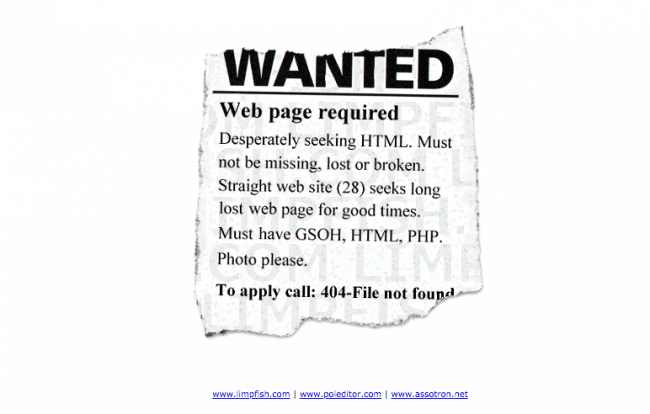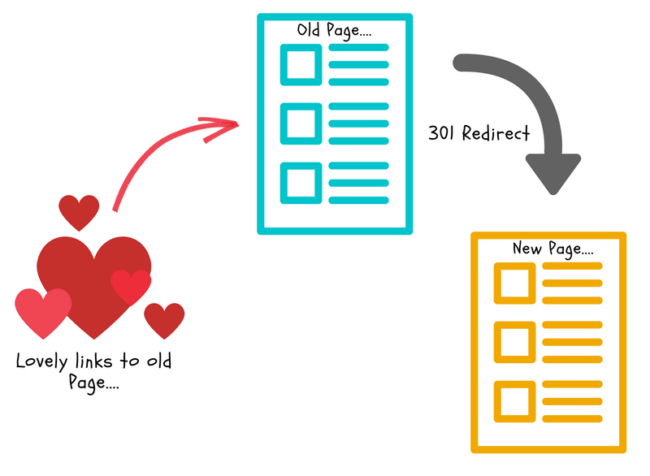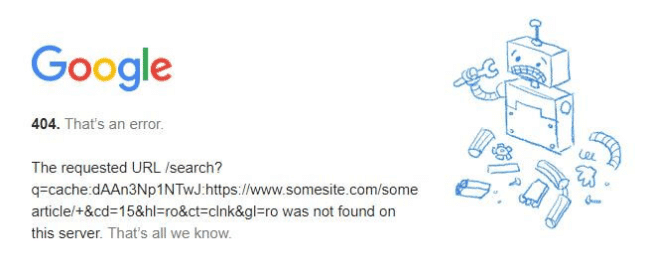What is a 404 error?
Have you ever clicked on a link and been greeted with a frustrating error that says the site you want to visit isn’t available or that it can’t be found?
This error message is known as a 404 HyperText Transfer Protocol (HTTP) status code.
This code is sent from a website’s server to your web browser, which initially sent the HTTP request to access the site.
Once you receive the code, the message displayed by your browser usually looks something like this:

404 error code
There are a few different causes of 404 errors. One of them could be that you simply typed in a website’s URL incorrectly.
Another cause might be that a website has removed or relocated a page without redirecting the original page’s URL to the new one they created.
So when you try to visit the old page, you’ll get a 404 error instead of being sent over to the new page. A server error can also cause a 404 code, although it’s less common.
Individual websites commonly customize their 404 Not Found error messages, so the error code can show up in just about any creative form you can think of.
For example, here is a 404 page from Limpfish that was designed to look like a “wanted” poster.

404 error history
The use of status codes dates back to the creation of HTTP, which was designed as the language servers and browsers use to communicate on the World Wide Web.
HTTP was created by Tim Berners-Lee of CERN back in 1989.
404 errors can appear as the following types of messages:
- 404
- 404 Error
- Error 404
- Error 404 Not Found
- 404 Not Found
- 404 Page Not Found
- HTTP 404 Not Found
404 error uses
Status codes allow your browser to communicate back and forth with a website’s server.
And a 404 code can be used to tell visitors that something is wrong with the page they wanted to visit, whether it’s the site’s fault or the visitor’s fault.
If your site is throwing a 404 error code, you’ll know that you need to take a few steps to get rid of it and fix the error on your page.
If the page has moved, the first step is to redirect the page to another one by using a 301 redirect code.
This code will signal to the visitor’s web browser that the original page can be found in a different location.

If you haven’t moved the page, double check to make sure that you didn’t make a mistake when creating the hyperlink. If you find that there’s a type, go back and simply fix the URL.
404 error misunderstandings
You might think that a 404 error can’t hurt your site. But it’s one of the most frustrating things for visitors to see when trying to access a web page.
If they can’t find what they’re looking for, it’s likely that they’ll exit your site and head to a competitor’s instead.
That’s why it’s so important to fix 404 errors on your website as soon as you find them.
But having a large number of 404 errors on your site can also hurt your SEO by causing you to show up less often in search results.
The 404 errors themselves aren’t inherently harmful. Even Google has 404 errors.

But your links that contain URLs pointing to the 404s can be since they’re technically broken links.
This is because search engines rank sites based on the quality of their links, among other things.
How to fix a 404 error
When a page breaks, it’s a bad experience for users. Therefore, it is good practice to proactively monitor your website’s 404s and fix them especially when users are telling you they are broken or they have inbound links which can help your SEO.
There are really two fixes for a 404 error:
- Do nothing (which is a choice itself and therefore a “fix”)
- Redirect it via a 301 redirect to another page.
For the second one, there are various ways to implement redirects.
If you’re on WordPress, then you can likely install the Redirection plugin which we’ve used for years here at Credo and are very happy with.
You can also likely implement a redirect at your host.
If your site is built custom, then a developer will need to write a rewrite rule and usually implement it via .htaccess. This works well and is actually the “proper” way to do it, but it does involve a developer being involved and then fixing redirects that then break as the web atrophies is more work.


